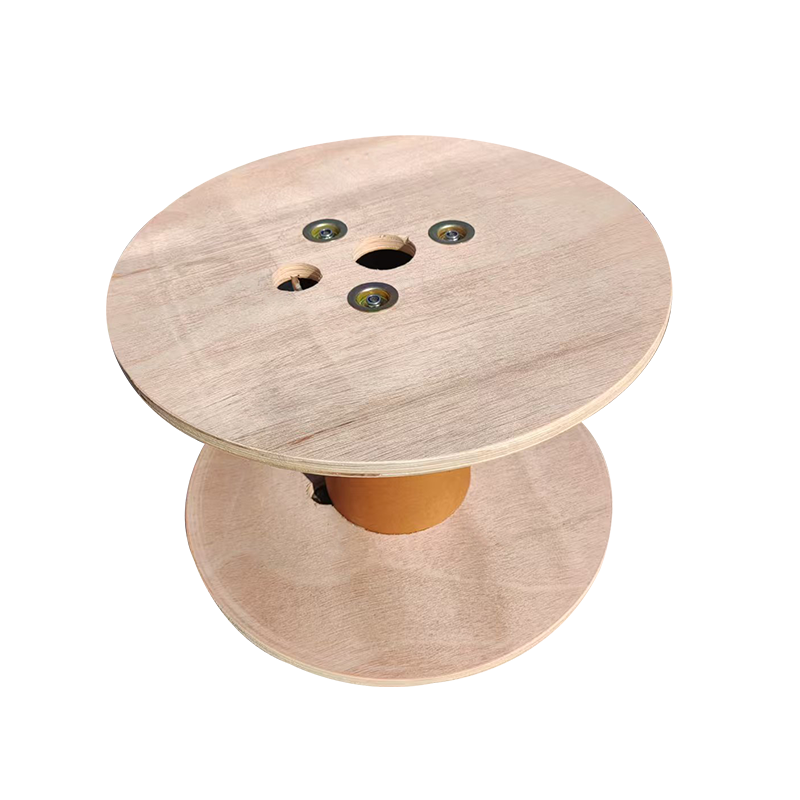May 12, 2025
Plywood has become a preferred material in the manufacturing of cable reels, particularly for medium-duty and disposable applications, due to its engineered composition and performance characteristics. Compared to solid wood and plastic, plywood offers a range of structural benefits that enhance the reel's functionality, durability, and economic viability.
1. Superior Dimensional Stability
Plywood is manufactured by laminating multiple thin veneers of wood with their grain directions alternating at 90-degree angles. This cross-grain configuration effectively minimizes warping, cupping, and splitting that are common in solid wood when exposed to variations in humidity or mechanical stress. This is especially important in cable reels, where uniformity and shape retention are critical during cable winding, transport, and unwinding operations.
2. High Strength-to-Weight Ratio
Due to its layered construction, plywood provides excellent mechanical strength while remaining relatively lightweight. Compared to solid wood, it can achieve similar load-bearing capacity using less material, which not only reduces the overall weight of the reel but also makes handling and transportation more efficient. This benefit is particularly valuable for export and logistics, where weight-based shipping costs are a concern.
3. Uniform Load Distribution and Structural Integrity
The multi-ply design of plywood distributes mechanical loads more evenly across the reel structure, reducing the risk of localized stress points and failure. This uniform load-bearing behavior is especially advantageous when the reel is subjected to axial compression during cable winding or lateral stress during handling and stacking.

4. Resistance to Splitting and Cracking
Unlike solid wood, which may contain natural defects such as knots or grain inconsistencies, plywood's engineered layers help resist crack propagation and impact damage. Compared to plastic, which may become brittle over time or under low temperatures, plywood maintains its toughness across a wider range of environmental conditions.
5. Customizability and Dimensional Precision
Plywood can be easily cut, drilled, and machined using CNC (Computer Numerical Control) technology. This allows manufacturers to produce reels with precise flange diameters, drum widths, and bolt hole placements, ensuring compatibility with cable laying machinery and improving balance during high-speed unwinding.
6. Cost Efficiency and Material Utilization
Plywood production utilizes fast-growing timber species and thin veneer layers, making it more resource-efficient than solid wood. It also allows for minimal material waste during fabrication. While plastic reels may offer some reusability, their production involves higher energy consumption and non-renewable raw materials. In contrast, plywood offers a balance between performance and sustainability, particularly for one-way shipping or low-cycle usage scenarios.
7. Environmental and Sustainability Considerations
Plywood is a wood-based, biodegradable product that can often be sourced from sustainably managed forests. It offers a lower environmental footprint compared to petroleum-based plastics and contributes less to long-term waste streams. Furthermore, many plywood cable reel can be disassembled and recycled or repurposed after use.